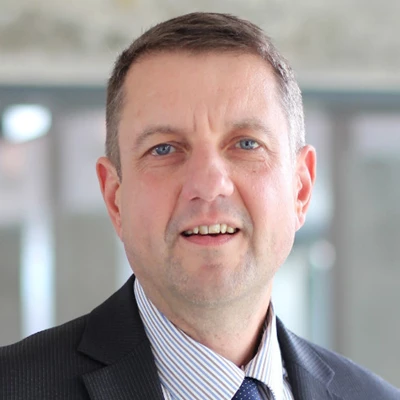Wednesday, November 26, 2025
ICE Bridges of the River Clyde Tour
- Delegates registered for Bridges Scotland have a special opportunity to take part in a one-hour tour of some of the River Clyde's Bridges, hosted by an expert from the Institution of Civil Engineers Scotland.
- Visitors will meet beneath Kingston Bridge (1970) on the northern bank of the river, where the guide will also provide some detail on the bridges upstream, including Tradeston Bridge (2009), and George V Bridge (1928). The group will then walk downstream to Clyde Arc (2006), Bell's Bridge (1988), and Millenium Bridge (2002), heading to the SEC Glasgow for the start of proceedings.
- Registration is closed. Please email conferences@hgluk.com to be put on a waiting list.
Provenance, Detailing and Form – The Potential for Timber Bridges in Scotland
- Conceptual approach to modern timber bridges.
- Differences and similarities with other forms of bridge construction.
- Lessons from Europe and Scandinavia.
The New White Cart Crossing in Paisley
- Innovation through the tied-arch concept on the AMIDS South project for Renfrewshire Council.
- Structural and geotechnical advantages and efficiency through modern engineering and materials.
National Highways Structures Moonshot
National Highways’ Structures Moonshot is an R&D project looking at NDT for concrete bridges with hidden critical elements. The project includes:
- Review of current generation forms of NDT and forensic investigation of their effectiveness.
- Investment in low-TRL technologies to develop new concepts to a point where live trials can be conducted.
- Deployment of new NDT technologies on deteriorated in-service structures to review effectiveness.
Low Carbon Active Travel Bridges – An Overview
- How can we maximise the “carbon benefits” of active travel bridges, while minimising their “carbon impact”? Can we ever achieve active travel bridges with no carbon impact at all?
- Active travel bridges can be a lower-cost, lower-risk test bed for transformative technology.
- This presentation explores the state-of-the-art in low carbon active travel bridges.
Ignite Session: Modular Bridging in Rural and Urban Environments
- This presentation will showcase the use of modular bridges in overcoming significant access constraints in dramatically different environments.
- It will highlight two applications of accelerated bridge construction, one in the rural village of Craigo, Scotland, and the other in Stratford, London.
Ignite Session: Bridge Monitoring through Dynamic, Static, and AI-Driven Analysis
- Discussing hardware and software solutions for structural monitoring, the presentation will cover projects such as the East Huntington Bridge, featuring dynamic and static monitoring, and the Chetwynd Bridge, focusing on static monitoring.
Ignite Session: The Villari Vision – Seeing Steel Fatigue in Real-Time
- This session focuses on detection of crack growth in steel, which has been challenging and costly, either through the use of non-destructive testing or monitoring.
- New sensor technology which uses the Villari effect and employs low-cost permanent wireless battery powered sensors to detect and measure fatigue from early stages will be examined via a case study.
Ignite Session: Predictive Vision – AI for Asset Integrity
- Discussing the use of AI to forecast the behaviour of critical infrastructure with 99.3% accuracy.
- Explore how AI trained on SHM data can forecast degradation before visible signs emerge, drawing on real-world results from 200-year-old bridges and live work with clients such as Network Rail, Welsh Government and local authorities.
Kalemouth Suspension Bridge – A History of and Planned Refurbishment
- Short history of the Category A Listed bridge, constructed c.1835 and designed by Captain Samuel Brown.
- Background to closure of motorised vehicles and the study work undertaken since.
- Details of the planned refurbishment works and next steps.
How Does Technology Enable Better Outcomes?
- The use of technology to gain better knowledge and understanding of an asset.
- How better information and insights reduces risk.
- Using Immense AI and SRM AI to gain greater understanding of the impacts of interventions on operational infrastructure.
- The use of AI supported project delivery; centralised data, available to all.
Local Authority Structures: A Ticking Time Bomb?
- Highlight the growing risk in Local Authority structures across the UK.
- Outline current approaches to managing structures and mitigating risk.
- Discussion on the effective communication of risk.
- Summarise proposals for collecting & integrating data at a national level to enable more effective asset management.
Thursday, November 27, 2025
Forth Road Bridge Main Cable Internal Inspection and Assessment
- The presentation will discuss the history of the Forth Road Bridge Main Cable Internal Inspection and Assessment and the works undertaken to prevent continued corrosion, including the refurbishment of the main cable dehumidification system.
- David will also discuss the latest internal inspection and assessment methodology and look at the future implications for the Forth Road Bridge.
Visual Engineering: Bringing the Construction of the Forth Rail Bridge to Life
- Discover Walid's decade-long pursuit to capture the Forth Rail Bridge's construction, striving to visually convey its majesty, complexity, and cultural significance.
- Using the landscape as a cinematic tool, learn how Walid integrated the environment into every frame of the film, using light, weather, and movement to create the visual narrative.
Management and Assessment of Concrete Highway Bridges Containing Half-Joints
- Bridge collapses involving half-joints.
- How can risks be managed?
- How can structural capacity be assessed?
- Management actions.
Speakers
Panel: Addressing the Skills Shortage
- Discussing reasons behind the skills shortage and ways of remediating it for the bridges sector.
Speakers
Ignite Session: Masonry Bridge Rehabilitation
-
Showcasing the MARS System of masonry bridge rehabilitation highlighting case studies that illustrate the latest developments.
-
The MARS System offers a low-carbon and cost-effective solution for strengthening and safeguarding the future of our rich heritage of masonry bridges.
Ignite Session: The Society of Chief Officers of Transportation in Scotland
Asset Custodianship
- Bridge managers across Scotland face an impossible equation: ageing infrastructure, growing demands, and shrinking budgets. Traditional approaches that worked in better-funded times are no longer sufficient.
- This presentation will equip delegates with:
- A practical four-risk framework for prioritising interventions.
- The five operating modes that determine what actions are actually available.
- Tools for communicating risk to non-technical stakeholders:
Speakers
M74 Nethan Viaduct
-
Project Identification & Design: Defining project scope based on inspection outputs, defect prioritisation, and program requirements, while managing design constraints, operational sequencing, and DMRB standards.
-
Traffic Modelling & Phased Management: Maintaining full traffic flow by splitting the works into five planned phases, utilising traffic modeling and delay prediction to manage disruption.
-
Construction Progress & Buildability: Adapting the program by responding to on-site challenges, applying lessons learned between phases, and implementing buildability improvements (like the hydro demolition cage and supply chain acceleration).
25 Years Later: The Millennium Bridge Building Bubble Reviewed
- A Synopsis of the 2025 IABSE Henderson Colloquium at Christ’s College Cambridge.
- How did the millennium bridge building programme happen?
- Were the bridges a success? Could or should it happen again?
- What would we do differently now?























